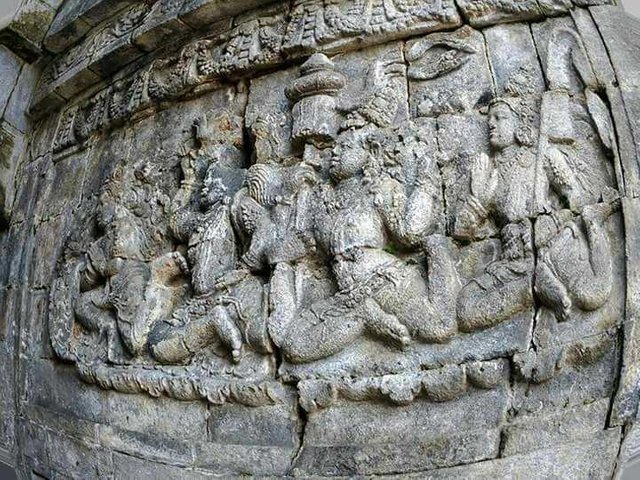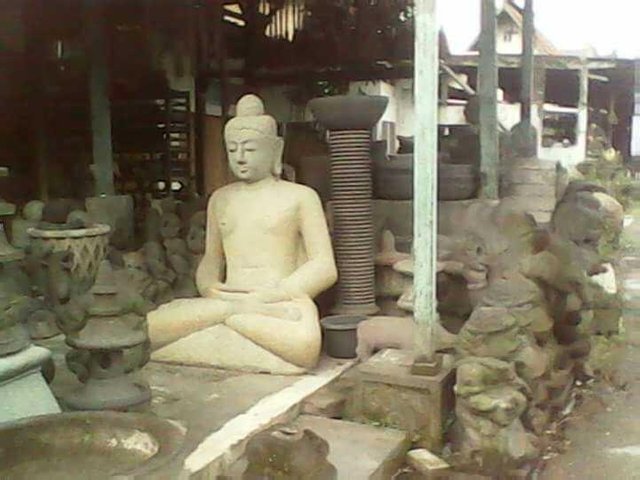The Art of Stone Carving And Relief

Relief is the art of carving and engraving 2 or 3 dimensions usually made on stone. This form of carving is usually found in temples, temples, monuments and ancient historic sites. In Indonesia, the reliefs on the walls of Borobudur temple are one example used to describe the Buddha's life and his teachings.


Sculpture has characteristics that are slightly different from the art of carving. Indeed, the materials used exactly the same as those used by the art of carving. But in the art of sculpture, not just paint on stone, wood, or other materials. In the art of sculpture we must be able to create a form that suits our desires. So later it will be a form in which there are carvings that look beautiful when viewed.
Sculptures that exist in Indonesia at first we can see from the development of sculpture in Indonesia. The Indonesian people began to recognize carving since the stone age (Neolithic), which is around 1500 BC. At that time the ancestors of the Indonesian nation had made carvings on stone axes, forging clay or other materials he encountered. Motifs and workmanship carving at the time was still very simple. Generally geometric motifs of lines, dots, and arches, with clay, stone, wood, bamboo, leather, and animal horns. In an age better known as the bronze age, which ranges from 500 to 300 BC. Materials for making carvings have undergone the development of yanitu using bronze, gold, silver and so forth. In making the engraving is using cast technology. The motifs used during the Bronze Age are the meander, tumpal, twinning, mask, and animal and human motifs. The meander motif was found on bronze nekara from Mount Merapi near Bima. The tumpal motif is found on a bronze pitcher from the West Sumatran kerinci, and on the outskirts of a nekara (moko from Alor, NTT.Poly twisted motifs are found in bronze nectar from West Java and on bronze vessels of kerinci, Sumatra.The mask motif is found on the neck of jug from Sumba, Nusa Tenggara, and on the bronze ax from Sentani Lake, Irian Jaya This motif represents the face and eyes of a person who gives magical powers that can fend off evil.The animal and human motifs are found in the nekara of Sangean.



Statue
After Hinduism, Buddhism, Islam entered Indonesia, the art of carving has developed very rapidly, in the form of production design, and motive. Carvings are found in the temple bodies and inscriptions made by people in those days to commemorate the kings. The shape of the carvings is also found on weapons, such as kris and spear, tombstones, mosques, palaces, musical instruments, including gamelan and wayang. Motif carving, in addition to describing the form, sometimes contains the story of the gods, myths, heroism, etc.. Evidence of the history of relics carving in that period can be seen in the reliefs of Penataran temples in Blitar, Prambanan and Mendut temples in Central Java.
At the time of this carved art packaging people began to know the art of chiseling. Society no longer just carve on stone or wood alone but has started trying to make a form for the art of carving more interesting.
Nowadays wood and metal carvings are rapidly evolving. And the function has been shifted from the things that smelled magically turned into just as a decorative tool only. This is seen in more and more circulating in the community carvings or sculptures that are only as decoration in the house only. Usually on wood carvings include Pejajaran, Majapahit, Mataram, Pekalongan, Bali, Jepara, Madura, Cirebon, Surakarta, Yogyakarta, and various motifs from outside Java.
Those motifs that used to smell with mystical things have now become commonplace. Perhaps because the public is now less understanding of history then little things like this have begun to be forgotten. When we see a seat we sit in has a patterned carvings. Maybe young people today are less able to understand what exactly the purpose and meaning of the motives they occupy them.
Another example of the shifting function of sculpture is about sculpture. I often see there are 2 large statues in front of a magnificent house. Usually we call it as Gupolo in Javanese. Once it was a statue that was the symbol of a respected man. However, we see now, the connotation is only a statue of the house keeper only.
According to the development of sculpture world in Indonesia this is also good. There are also those that help the economy of the country. In a village in Bantul yogyakarta, sculpture is very useful as a livelihood of the villagers. In one village, its citizens are equally developing sculpture into an art that sells for sale even abroad. Development of sculpture is actually making sculpture become more popular among the community. Although it may have shifted the function of being just an ornament or souvenir.
In the latest developments that I heard,the art of chiseling has again shifted its function, which in my opinion is the most extreme. Sculpture is no longer a mystical and mysterious work, nor a decoration of a place. Rather, as I have just seen, the art of chiselling has changed its function as a tool to provide social criticism for the government. This sculpture was developed by one of the lecturers from the arts university which is located in Jakarta.
When we talk about sculpture then we will find many things related to the development of sculpture from the time before Christ up to the contemporary sculpture that developed in Indonesia today.






But for now we can see the stone carver in the region Muntilan, Magelang area which until now almost most of the people are stone carvers and relief workers.
Magelang Regency is rich with historic relics. Many temples are found such as Borobudur Temple, Mendut, Pawon, Ngawen and many more. In history, sculpture or carving has been around for centuries in Magelang when the historic temples were built. The tradition of this hereditary ancestor is in the region Muntilan and surrounding.


Muntilan is famous as a stone carving producer with artisans and stone carvers who have a high artistic taste. Evidenced by the number of stone carving crafts displayed on Jalan Magelang - Jogja (Muntilan - Salam). Hundreds of types of sculptures, wall ornaments, and reliefs of various shapes and sizes and kitchenware such as cobek can be found here.
Magelang stone carving is much in demand by both domestic and foreign tourists because of its quality with relatively cheaper price. Not complete if to Magelang without buying craft stone carving as souvenir.









Up here my post today, I hope you like the article about the art of stone carving and this relief and hopefully this post article can add insight and knowledge of us all.
Greetings separated from me @arnoldmark, to meet in the next post, thank you.
Really amazing I followed you. Will you follow me too?
Thanks
yes of course friends @okankarol